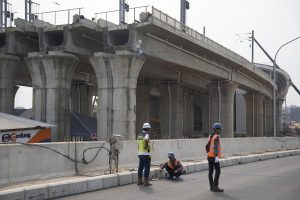When President Xi Jinping launched the Belt and Road Initiative (BRI) in September 2013, he signaled the dawn of a new era in how China engaged with the world. In the decade since, Chinese leaders have used the BRI as a springboard to assume a global leadership role in bankrolling connectivity infrastructure in the Global South. The ambitious initiative solidified China’s position as a financier of first resort for emerging economies; Beijing surpassed the United States as the largest bilateral funder to the developing world in 2011, and now outstrips U.S. funding by a more than two-to-one basis.
As we approach the initiative’s 10th anniversary, the BRI is facing headwinds from a number of different directions that threaten its staying power and prominence. At home, the BRI must jockey for position in view of other leadership priorities – namely the launch of the more development-centered Global Development Initiative (GDI) and China’s slowing domestic economy. At the same time, the world in 2023 looks far different than it did in 2013, as countries navigate multiple complex crises, alongside growing concerns about the risks of debt-financed development and the resurgence of great power competition.
Chinese leaders will necessarily have to adapt their efforts to these new conditions, and there is emerging evidence that they are already starting to do so.
Xi delivered two key speeches in September and October 2013 that mark what observers consider the BRI’s official launch. The first speech, delivered at Kazakhstan’s Nazarbayev University, proposed the formation of a “Silk Road Economic Belt” from Beijing across Central Asia. In it, Xi emphasized the two millennia of exchanges between China and Central Asia and highlighted key steps to achieve regional cooperation: strengthening policy communication, improving road connectivity, promoting trade facilitation, enhancing monetary circulation, and strengthening people-to-people communication.
In a similar vein, the second speech was delivered in the Indonesian parliament and established a “21st Century Maritime Silk Road” across Southeast Asia, in line with the original intention to link East Asia and Europe through physical infrastructure.
That is not to say that Chinese overseas development financing only started in 2013. China’s foreign aid activity began in the 1950s and went through different stages before entering a new phase of “scaling up” in the early 2000s, when its development financing charted a more than ten-fold increase from less than $4 billion dollars a year in 2000 to over $50 billion in 2010. Largely due to these pre-2013 trends, there is no clear consensus on whether the official launch was actually impactful in terms of changing China’s financing patterns or if the Belt and Road Initiative – as it came to be called – was simply a branding campaign intended to clearly label efforts that had already been in effect for the previous decade.
Regardless, China’s development financing has reached a new scale since 2013. In the first five years of the BRI (2013-2017), China bankrolled an average of $83.5 billion a year in overseas development projects, a net increase of $31.3 billion per year on average over the five years prior (2008-2012). The net increase alone is equivalent to the total U.S. average yearly financing in the 2013-2017 period.

































